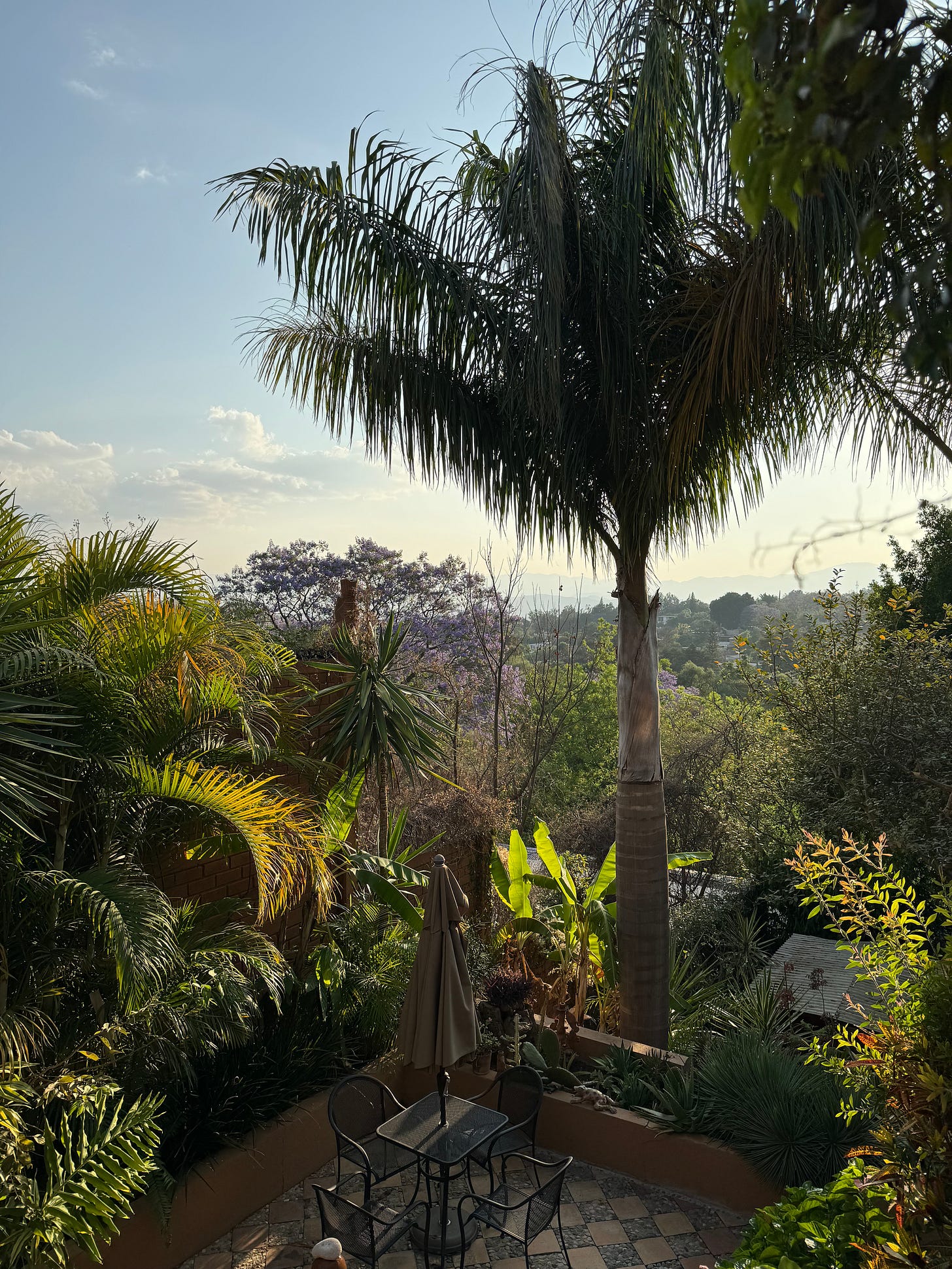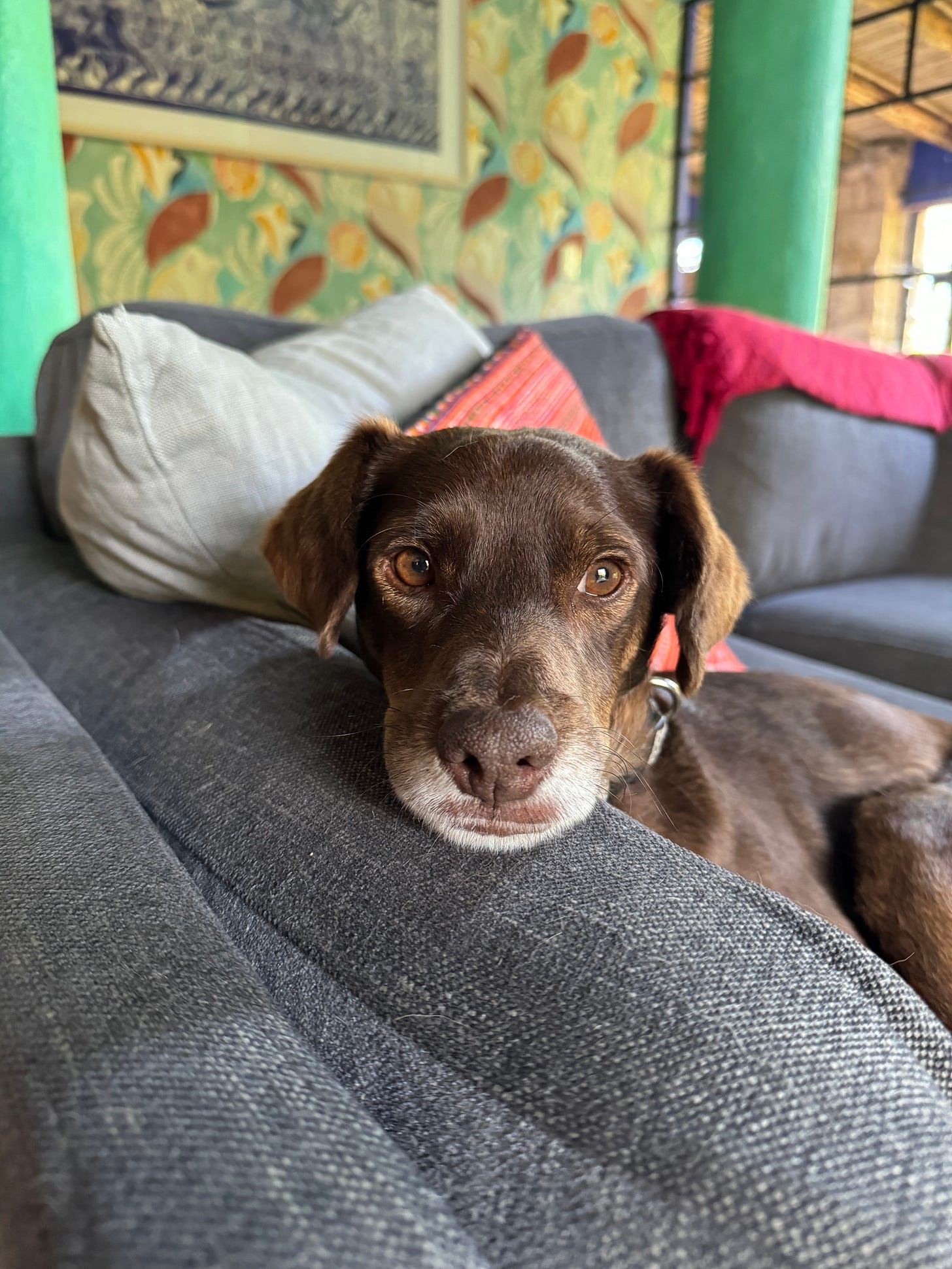Today’s entry marks the start of a new, recurring series excerpted from the book proposal I am working on. This series allows me to develop a more cohesive, linear, character-driven story about our first year in Oaxaca, while also providing a much greater level of detail about our move. The same type and variety of posts I’ve already been writing will also continue to appear. Thank you for reading!
It was the overhead lights turning off which made me realize I was ready to leave.
The office of Dotdash Meredith sits at 225 Liberty Street, a large office building in New York City’s financial district. The company occupies four floors connected by both elevators and open-air staircases, and one side of the building features glorious, unobstructed views of the Hudson River. But despite the fact that its brands rely on thousands of employees whose careers are dedicated to creative arts like writing, editing, photography, videography, and design, it is surprisingly unremarkable.
The office is modern, made of concrete, glass, and stainless steel, with white walls and wall-to-wall carpet. It is blandly corporate, the kind of place that has you counting down the moments until you can slip out the stale confines of the building and back into the chaos of the city. The fact that it sits inside of Brookfield Place, a shopping mall filled with stores for companies like Bottega Veneta, Gucci, Ferragamo, and Louis Vuitton, only serves to make it more soulless. It is not lost on the employees of Dotdash Meredith that their office sits surrounded by stores that the vast majority of them cannot afford to shop at.
The problem with the lights turning off was one of movement; to save energy they were motion-sensitive, activating only when someone was actually in the space. And it was a lack of movement, of people, which was one of DDM’s most vexing problems. It was 2023 and after years of operating largely remotely due to the covid pandemic, the company’s executives had decided that it was essential for employees to return to the office at least two-to-three days per week. It wasn’t just a suggestion, the company’s CEO Neil Vogel said during a series of all-hands staff meetings where he grew increasingly, visibly furious, it was mandatory. If you don’t like it, find somewhere else to work.
Despite the rage, pleas, and thinly veiled threats, the office remained largely empty. Only a fraction of the many hundreds of seats reliably had people sitting in them. And when people were there it was impossible to actually get anything done. The conditions of an open-air office are so disruptive that, after years of working comfortably from home, being around loud strangers made it impossible to get any work done. Many of us were also still traumatized by the pandemic, so being exposed to people who were randomly coughing or sneezing didn’t improve one’s ability to focus. As a consequence, if you actually wanted to be able to get any work done the best days to go in were a Monday or Friday, days when the office was so empty, so desolate, that the overhead lights would regularly and abruptly switch off, leaving you in beige, corporate gloom.
It was hard to get over how pointless going into the office was. Publishing is a collaborative effort, but writing, editing, and even designing are largely solitary jobs. There wasn’t a single person I spoke with who didn’t feel their productivity dropped significantly when they worked surrounded by other people. We had built such effective digital systems for working together that it was also clear the mandate to actually be in the same physical space wasn’t about productivity, or creativity, or even making money; really, it was just about an employer wanting people to do what they said, when they said it. Dotdash’s motto had been “trust the process,” but really what that seemed to mean was, “do what you’re told.”
Sitting alone in the dark of a largely empty office, I dreamed of Oaxaca.
After about six months of working as a contract employee for the beloved online food publication Serious Eats I was hired by the brand’s parent company, Dotdash, as their “Updates Editor.” My job was to make sure Serious Eats’ enormous archival library of recipes, features, and other types of food content was accurate, well-edited, and, most importantly, appropriately formatted so that it would be favored by Google’s search algorithm. I had only had my new job for a couple of months when it was announced, thanks to a corporate merger, Dotdash would soon be Dotdash Meredith.
It was a somewhat peculiar turn of events. Dotdash, which in its nascent days was the internet 1.0 site About.com, had around 600 employees. Meredith, on the other hand, had thousands of employees and was the publisher of revered (and reviled) magazines such as People, Food & Wine, Entertainment Weekly, and Travel & Leisure. How could a (comparatively) small company like Dotdash buy one so much exponentially larger? The answer was billionaire Barry Diller, whose company IAC was the true controller of Dotdash and the financial backer for the merger.
The merger was not unlike that famously grotesque The Far Side cartoon which shows a snake trapped in a crib because, having eaten a large baby, it becomes too fat to slither to freedom. Dotdash consumed a company so much larger than itself that very little time went by before Dotdash stopped being Dotdash and simply became Meredith. Very suddenly the way the company interacted with its employees became far more corporate and once the dust had settled we began receiving communications warning us to prepare ourselves for an eventual return to working in an office. Get your travel out of your systems now, they said, because—paraphrasing—pretty soon you’ll be chained to your desks again.
Food and travel writing is a field rife with “digital nomads,” a cadre of people, mostly young, who in response to having jobs with low and stagnant pay, few benefits, and virtually no stability have chosen a life exclusively in the present. Without the ability to save money for retirement (or to buy health insurance or afford rent) why not live a life with as much adventure and leisure as you can find? Digital nomads shuffle from one affordable country to another while doing their jobs using the wifi of cafés, hostels, or hotel lobbies. Andrea and I had never had the flexibility or desire to live a life completely on the road, but given the warning that full-time remote work would be coming to an end, why not have at least a taste of that life and work from somewhere different and fabulous for a few weeks?
One night over a pizza from Mama’s Too!, our favorite pizzeria in Manhattan, Andrea and I discussed where we might want to visit. For practical reasons we knew it would need to be in a time zone that wasn’t too different from the East Coast, which sadly completely ruled out Asia. Europe was also a bit too difficult to be truly fun. We didn’t have enough experience with Africa for it to be an option (plus the same time zone problems applied), and the Middle East was impossibly distant and unsafe. Where could we go?
We looked out the window onto a gray, drizzly, miserable January evening. The brick and stone of New York was slicked with rain and the garbage strewn on the sidewalks and pavement looked particularly soggy. Even the dogs out for their evening walks looked damp, cold, and forlorn. We loved New York, weather and trash notwithstanding, but somewhere warm would be nice. It wouldn’t hurt if the food was incredible. And a short flight to a place with a similar time zone would make the entire venture possible. We were effectively limited to North, Central, or South America.
We already knew we loved Mexico, having been to Mexico City several times before, but we also wanted to go somewhere new.
How about Oaxaca?





